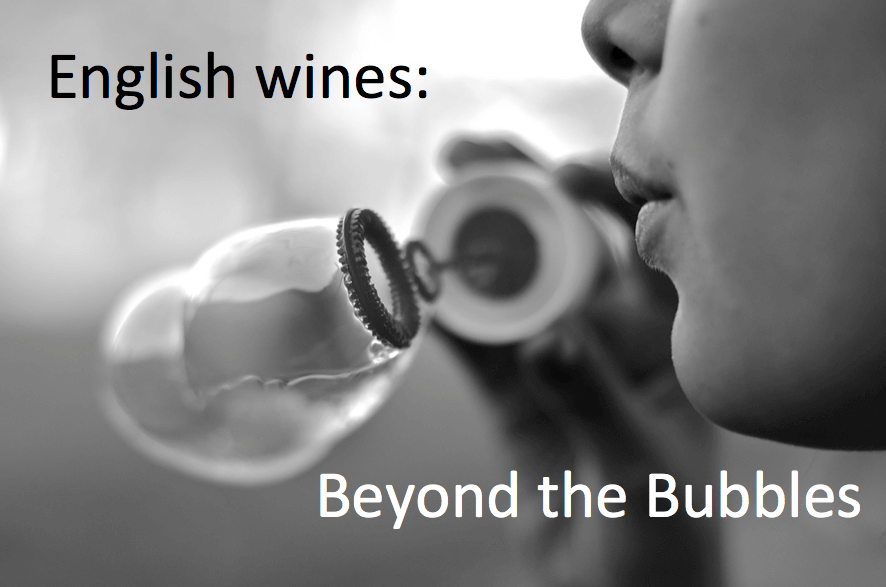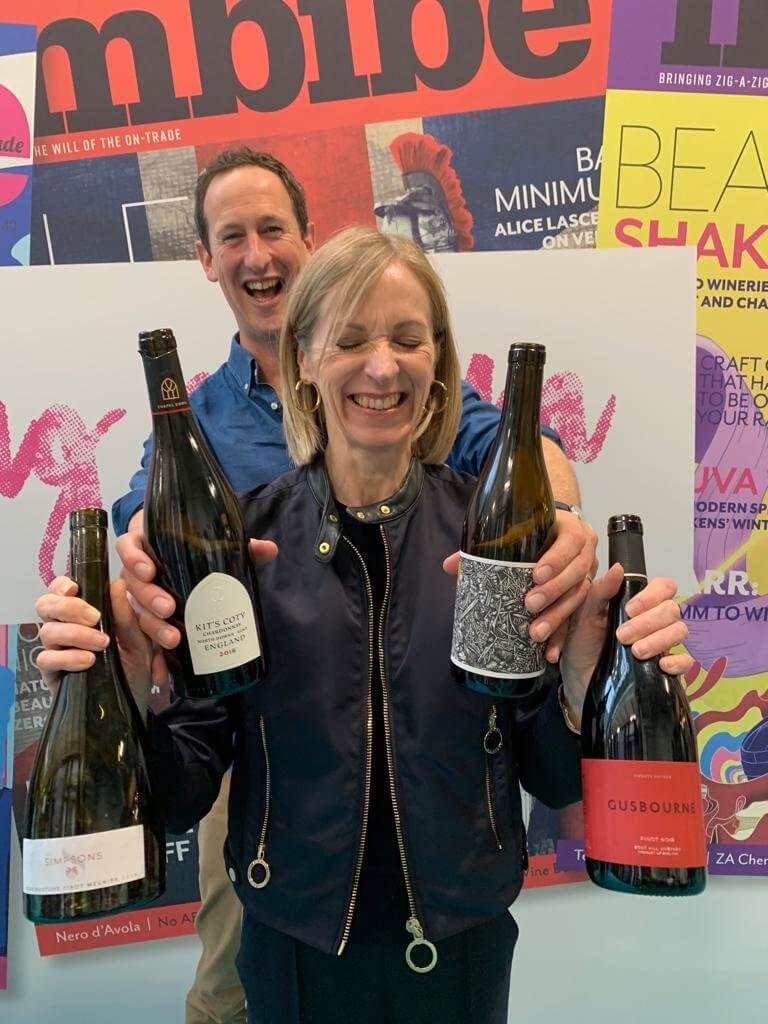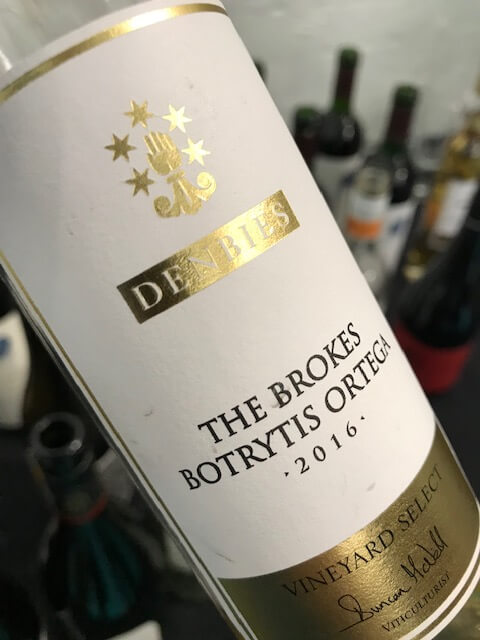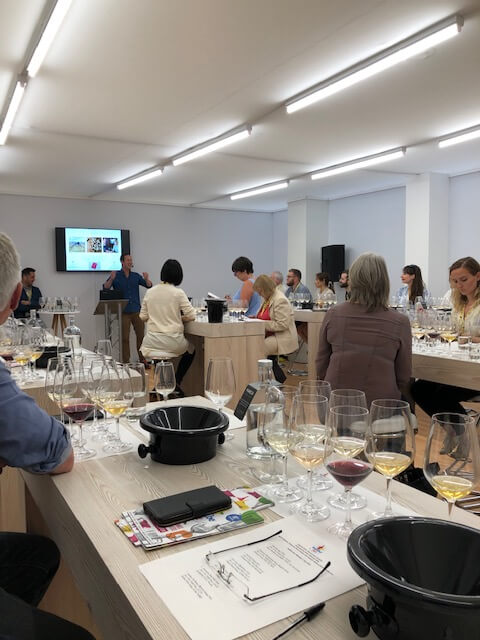Denbies The Brokes Botrytis Ortega 2016
Denbies The Brokes Botrytis Ortega 2016, 10%, England
(£60 for 375 ml, Denbies)
‘Celebrating the sparkling success of English still wine’ is an inspired turn of phrase, and it belongs to Ruth Simpson.
It was uttered at a masterclass I was hosting on English still wine together with Ruth – of Simpsons Wine Estate in Kent as well as Domaine Ste Rose in the Languedoc – and Charlie Holland, head winemaker at Gusbourne (also in Kent).
I’d lined up seven wines in a range of styles, from white to rosé, red and sweet, but none of them sparkling.
Was this an exercise in scraping the barrel, given fizz is what we make best in the UK? Hardly. If anything the difficulty was in narrowing down the field to seven, and this was revealing in itself. Susie and I taste a lot of English wines and it’s true they aren’t all great by any means – but the still wines are getting more and more consistent and rewarding, with ever-fewer duds.
In this regard, it was also interesting to hear what Ruth Simpson had to say at the event. She revealed how she and her husband Charles were dead set against making still wine when they first set up in Kent in 2013 (they’re on record as saying many of the English still wines they tried ‘ended up down the sink’).
But since then, and particularly given the amazing 2018 vintage they’ve, ‘done a U-turn’. In 2018, fully one third of their crop went to still rather than sparkling.
I asked both Ruth and Charlie before the event to draw up ‘mini manifestos’ about English still wine.
Charlie, while saying sparkling wine will continue to dominate English wine production for many years to come, adds that, ‘still wines will become increasingly important as the industry matures.’
He cites climate change as one reason – as the weather warms up, so it becomes easier to make still wines (grapes don’t have to be so ripe for fizz). Diversification is another – ‘the English sparkling market is already becoming crowded, so being able to offer something new, different and exciting is important to give depth to the category.’ And lastly economics – sparkling wine takes a long time to make, ‘whereas still wine can be released relatively quickly, helping to free up cash.’
As for which still wines will be the future, Charlie says, ‘I see Chardonnay and Pinot Noir as the obvious contenders for world beaters. We just need that Cloudy Bay moment…’
Ruth notes how Simpsons has made a ‘full U-turn’ on still wines and ‘we are now 100% convinced of its potential.’
She points to the quality of English terroir meaning ‘we could challenge areas such as Chablis and northern Burgundy’ in making wines with ‘minerality, poise, elegance and ageing potential.’ She adds that ‘choice of clones is key to quality still wines’ – in other words, using top-quality clones intended for still rather than sparkling production – and asserts that site selection ‘is the most important criterion for successful still wine production’.
‘We believe the future is very bright for English stills,’ Ruth concludes, ‘Bring on that Cloudy Bay moment!’
The line-up of wines was as follows:
- Flint Vineyard Bacchus 2018
- Simpsons Derringstone Pinot Meunier 2018
- Westwell Ortega Amphora 2017
- Chapel Down Kit’s Coty Chardonnay 2016
- Off the Line Hip Rosé 2018
- Gusbourne Pinot Noir 2016
- Denbies The Brokes Botrytis Ortega 2016
I’ve chosen to feature this Denbies sticky as it seemed to be the wine that generated the most interesting feedback. It’s far from cheap at £60 per half bottle. But it is stunning – utterly opulent and winning, with rich apricot and honey flavours, elegantly balancing acidity and a rich creamy lick on the finish. (Peter, 8/10, July 2019)
‘Hard to beat a sweet wine like that!’ grinned one taster afterwards when I asked about favourites.
The wine was the product of an excellent 2016 vintage on the estate, made from 100% botrytised Ortega from a misty pocket of vines on the estate. Only 500 bottles were made and experienced winemaker John Worontshak described it as, ‘The best sweet wine I’ve made anywhere, ever.’
What was notable with all the wines was how they are emblematic of how English still wines are breaking new ground with every vintage, raising the bar for quality and diversity of style as they do so.
Some photos from the event are below.










